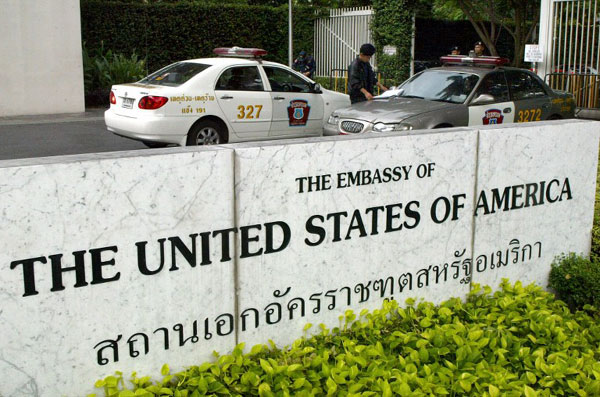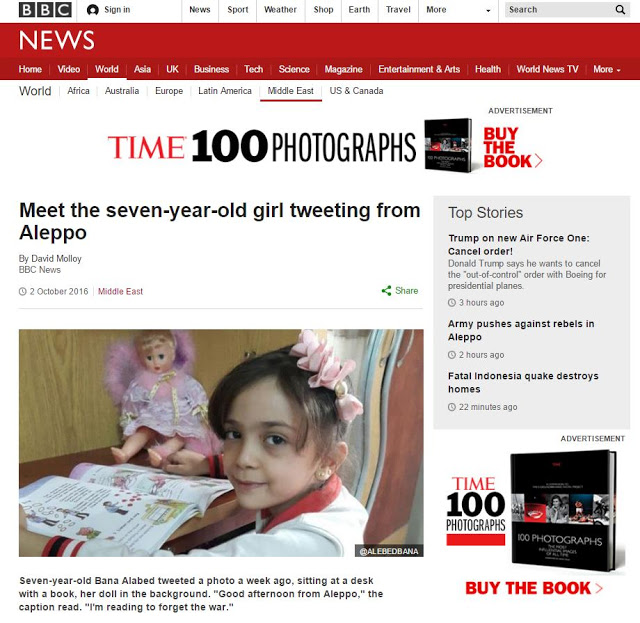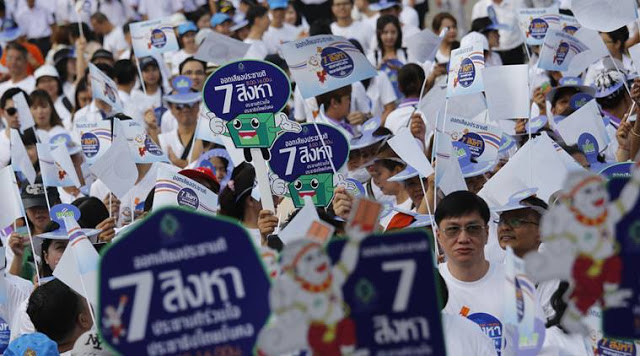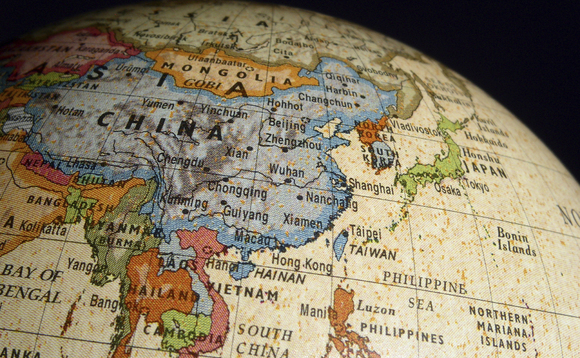The US Embassy admitted in leaked 2009 cable that it is aware Thaksin Shinawatra’s forces are operating under the cover of Thailand’s southern conflict.
During the August 7, 2016 referendum and then again on August 11-12, arson and bombs ravaged Thailand’s southern provinces.
The referendum was for a new national charter, overwhelmingly passed by Thai voters. It constituted a fatal blow to the political forces of ousted former-Prime Minister Thaksin Shinawatra. While Shinawatra and his supporters have a well documented history of wielding extreme violence including mass murder and terrorism as political tools, the Western media has worked diligently to dismiss any suspicions that Shinawatra was behind the recent violence.
And because Thailand’s three southern most provinces have hosted a decades-long low-intensity insurgency, the Western media along with Shinawatra’s political supporters and US-funded nongovernmental organisations (NGOs), have attempted to scapegoat insurgents.
In reality, they are merely using the insurgency as cover under which to launch wide scale terrorism and violence aimed both to coerce the Thai government and its people, while targeting and undermining peace, stability and the economy.
The US Embassy Knew of South-Based Network Since August 2009
The US Embassy in Bangkok, revealed in cables published by Wikileaks, was well aware of the fact that Thaksin Shinawatra’s political forces were operating in Thailand’s deep south, using the ongoing crisis as cover for their own campaign of violent subversion.
A classified 2009 cable titled, “Southern Violence: Midday Bomb Attack in Narathiwat August 25 Meant to Send a Signal,” reveals that the US Embassy has contacts with militants in the south, claiming (our emphasis):
Insurgents did confirm to a close embassy contact late August 25 that they had carried out the attack, intended as a signal for Buddhists to leave the deep south. With local elections scheduled for September 6 and a string of election-related acts of violence occurring in recent weeks, however, not all deep south violence is automatically insurgency related.
The cable would reveal that Sunai Phasuk, of foreign-funded Human Rights Watch, is their “contact” who regularly speaks with militants.
The US Embassy then admits that Shinawatra’s political forces are also likely operating in the south, using the conflict as cover:
The posting of the anti-Queen banners on her birthday, a national holiday, was both unusual and significant, but the fact that the banners were professionally printed on vinyl, written in perfect central Thai rather than the local Malay dialect, and touched on issues which don’t resonate in the south suggests those behind it were not local but national actors. Most in the know blame the red-shirts seeking to take advantage of inaction in the mosque attack case to undermine the Queen in particular and the monarchy in general.
The US Embassy cable would also admit (our emphasis):
Yala Vice-Governor Gritsada appeared surprised when we mentioned these banners to him on August 19, but he confirmed that the banners were written in perfect central Thai and mentioned issues that do not resonate down south, like the blue diamond. Gritsada said Pranai Suwannarat, the director of the Southern Border Provinces Administrative Center (SBPAC) had agreed these banners were the likely work of the UDD, not the insurgents. Sunai told us that the widespread presence of the banners indicates the strong organization and funding available to the UDD in Pattani province.
The UDD refers to Thaksin Shinawatra’s street front, the United Front for Democracy Against Dictatorship, also known as “red shirts.”
The UDD is guilty of serial acts of violence and terrorism, stretching back as far as 2006 and includes firefights and mass arson in Bangkok in 2010 that left nearly 100 dead, as well as gun and grenade attacks in 2014 that left nearly 30 dead.
Despite this knowledge, and knowledge that Shinawatra was likely behind a string of other bombings in and around Bangkok in 2006-2007, the US has continued providing Shinawatra support both outside of Thailand, and inside through a large number of US-funded NGOs working ceaselessly to create the conditions in which Shinawatra can return to power.
With these facts in mind, the recent bombings, both during the August 7 referendum and then again on August 11-12 point again toward Shinawatra and his political forces. Both Shinawatra’s political supporters and the foreign media have attempted to implicate the southern insurgency in order to direct suspicion away from them.
The US Embassy, clearly knowing that Shinawatra is operating in the south and using the conflict as cover to carry out sedition and violence on a national level, becomes complicit though its silence. The fact that US-funded NGOs are directly involved in hampering and undermining investigations implicates the US Embassy as being actively involved as well.
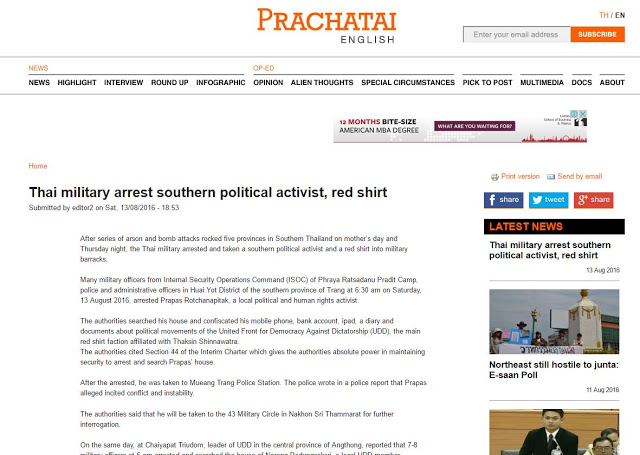
US State Department-funded Thai-based NGO Prachatai would fail to condemn the bombings on their website. Instead, they condemned the government’s arrest of UDD (red shirt) members in connection with the bombings. Prachatai also divulged details of the investigation in an attempt to undermine police efforts.
The US Embassy, throughout years of diplomatic cables, fully demonstrates its awareness of the violence and criminality Thaksin Shinawatra and his followers have committed, Yet they have refused to extradite Shinawatra to Thailand, granting him a special visa to visit the US instead.
The US continues to fund NGOs working directly on Shianwatra and his political supporters’ behalf, perpetuating the threat that they pose to Thailand’s people, security, economy and political stability.
The US claims to be an “ally” of Thailand, all while apparently cheering for the nation’s slide toward instability.
The New Atlas is a media platform providing geopolitical analysis and op-eds. Follow us on Facebook and Twitter.
